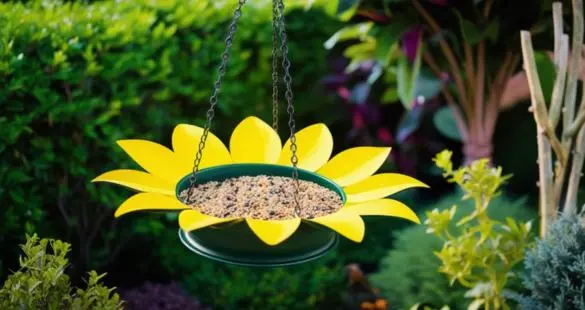Upcycling old materials for garden projects is an eco-friendly and creative way to enhance your outdoor space.
And one of the simplest yet effective projects is turning an old tire into a bird feeder.
- This recycled tire bird feeder attracts various birds to your yard and helps reduce waste.
- In this guide, we’ll walk you through the straightforward process of constructing your bird feeder using a recycled tire and give tips on feed selection and bird-friendly yard maintenance.
- You’ll be surprised at how easy and rewarding this project can be!
What is a Recycled Tire Bird Feeder?
A recycled tire bird feeder is a creative way to upcycle old tires and turn them into bird feeding stations. This project not only benefits the environment but also your feathered friends by providing a durable, weather-resistant feeder that supports local wildlife.

By hanging one in your yard, you’re not just inviting birds to enjoy a safe feeding spot but also significantly reducing the number of non-biodegradable tires in landfills. It’s a small step with a big impact, and you can be proud of your contribution to a greener planet.
Materials and Tools You’ll Need
Before starting, gather the following materials and tools to ensure a smooth process:
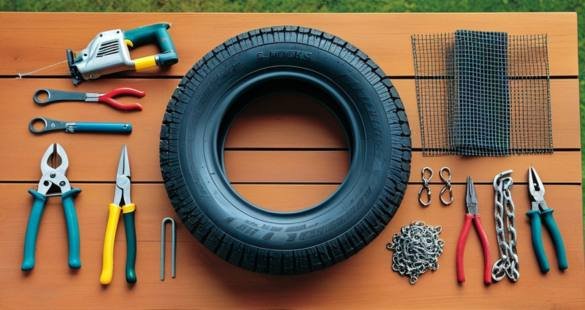
Materials:
- Three 2-foot sections of chain
- 4 S-Hooks
- 2 square feet of mesh window screen
- One standard tire
- Spray paint (optional)
Tools:
- Jigsaw
- Drill
- Bolt cutters
- Pliers
- Staple gun (1/4″ staples)
- Scissors
Constructing Your Feeder
Step 1: Trace Your Pattern
Using a marker, trace your desired feeder pattern onto the tire.

Avoid intricate designs with too many petals or sharp angles, as they can be challenging to cut.
Keep your design simple and avoid cutting too close to the tire’s tread or inner wall.
Step 2: Cut the Feeder Shape
Start by drilling a small hole along your traced pattern to act as an entry point for the jigsaw.
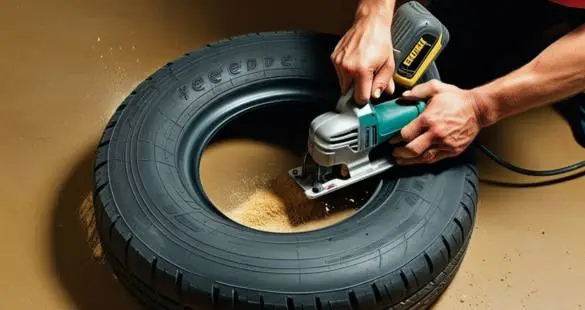
Use the jigsaw to cut out the feeder shape, following the pattern you’ve marked. Take your time to ensure a smooth cut.
Step 3: Attach the Mesh Screen
Lay the mesh window scree over the opening you’ve cut in the tire. Trace out a circle that leaves at least an inch of overhang.
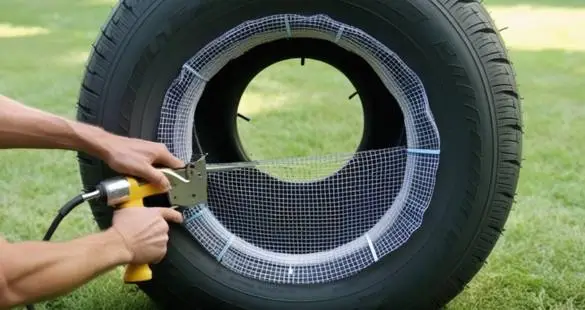
Cut the mesh with scissors and use a staple gun to attach it to the tire, keeping the staples about an inch apart.
Trim any excess mesh to ensure a clean look.
Step 4: Drill Holes for Chain Attachments
Drill three evenly spaced holes around the edge of the tire’s opening, placing them between the “petals” of your design.
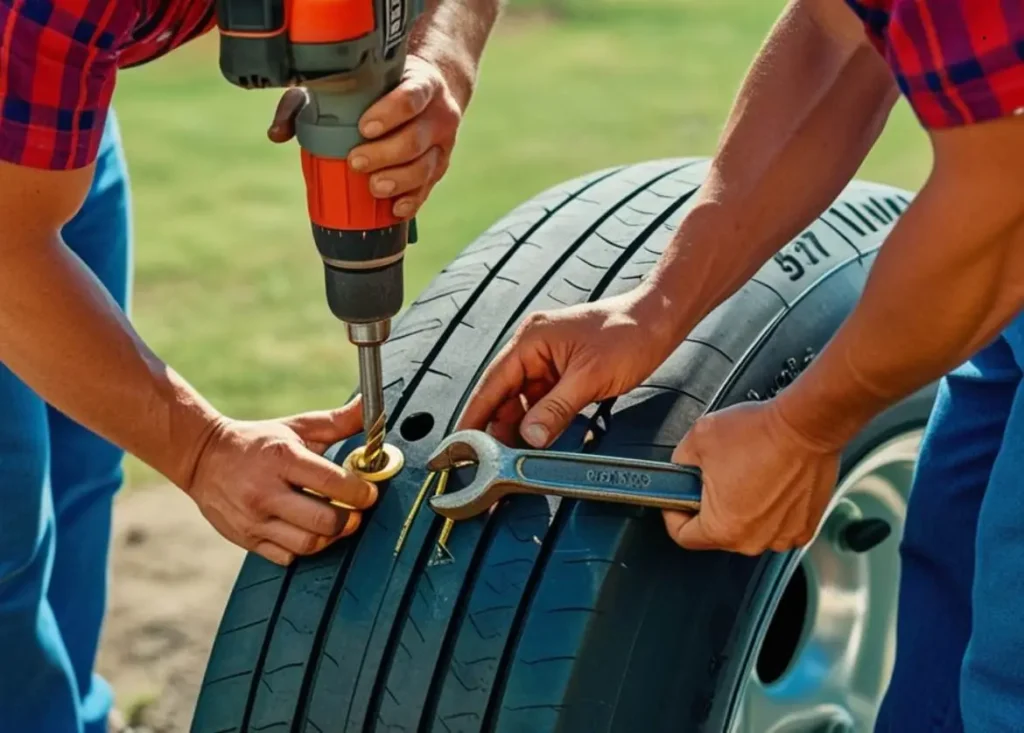
These holes will serve as attachment points for the chains used to hang your feeder.
Step 5: Attach S-Hooks and Chains
Insert one S-Hook into each of the drilled holes.
Use pliers to close the hooks over the tire, securing them tightly.
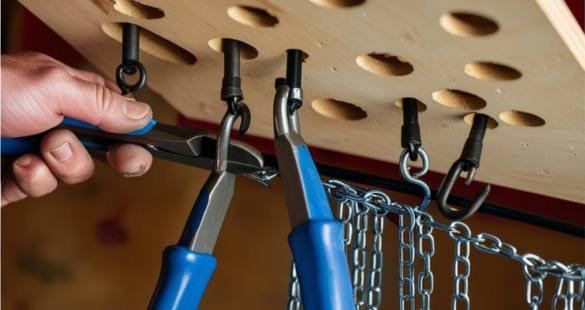
Attach one 2-foot chain length to each S-Hook, and then use the fourth S-Hook to join the tail ends of the chains together.
Step 6: Decorate Your Feeder (Optional)
- If you want to add a decorative touch to your feeder, now is the time to spray paint the tire.
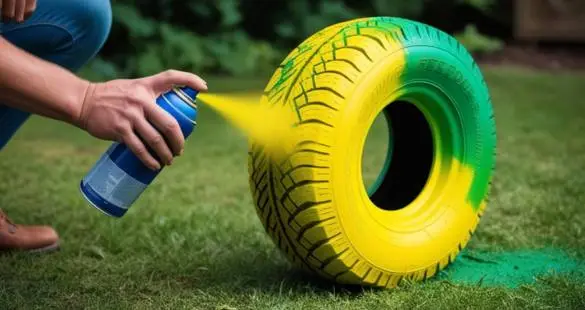
- Choose a color that complements your outdoor décor or helps the feeder blend in with the environment.
- Allow the paint to dry completely before hanging the feeder.
Hanging Your Feeder
When the feeder is made, you must find the right spot to hang it.
Popular options include tree limbs or unique stands available at garden stores.
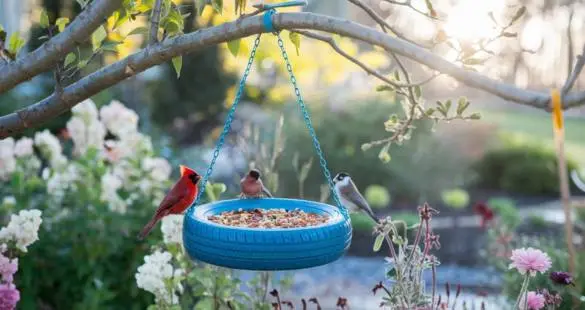
Choose a location that provides a good view of the feeder and is convenient for refilling.
You may also want to place it in a sunny area on your house’s east or south side to protect birds from winter winds.
Best Feed for Your Tire Feeder
This recycled tire feeder is a platform feeder, making it ideal for various bird feeds.
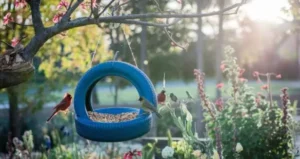
Here are some popular feed choices, along with the birds they attract:
Black-oil Sunflower
- Birds Attracted: Just about everything.
- Additional Notes: This is the most economical option, attracting the widest variety of birds. Remember that black-oil sunflower seeds can be messy, so rake up hulls in the spring to protect your grass.
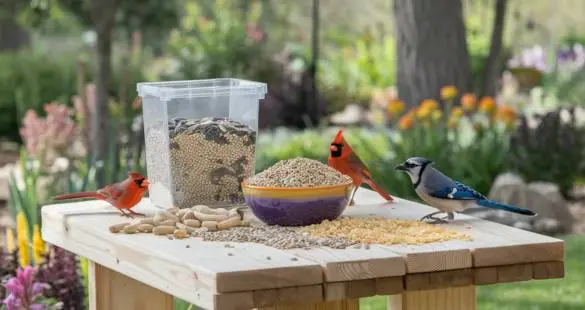
Safflower
- Birds Attracted: Northern cardinals, rose-breasted grosbeaks, and finches.
- Additional Notes: Squirrels typically avoid safflower seeds, which is a plus, but they are more expensive than sunflower seeds and may not attract as many bird species.
Peanuts
- Birds Attracted: Blue jays, nuthatches, woodpeckers.
- Additional Notes: While peanuts are a favourite for many birds, they are pricey and messy. Additionally, they are sure to attract squirrels.
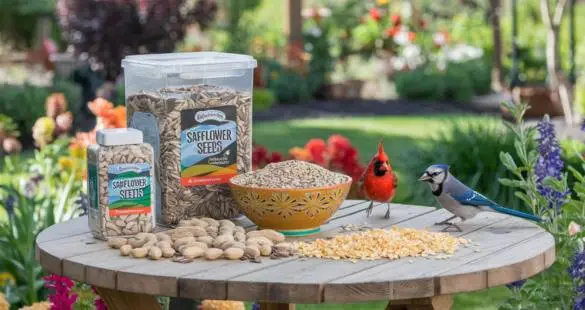
Cracked Corn
- Birds Attracted: Mourning doves, grackles, sparrows.
- Additional Notes: Cracked corn is a poor choice for in-town use, as it tends to attract deer and squirrels. It’s better suited for more rural environments.
Additional Tips for Attracting Birds
- Provide a Water Source: Birds need water for drinking and bathing, so adding a bird bath or shallow pan will increase the number of birds visiting your yard.
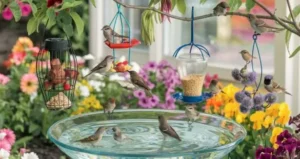
- Add More Feeders: Offering a variety of feeders with different feeds, such as suet, peanut butter, fruits, nectar, and thistle seeds, can attract a broader range of bird species.
- Bird-Friendly Landscaping: Plant trees, shrubs, and flowers that offer bird shelter and habitat.
- Try to position feeders within 3 feet of windows to reduce the risk of bird collisions and several feet away from areas where cats might hide.
Maintaining Your Feeder and Yard
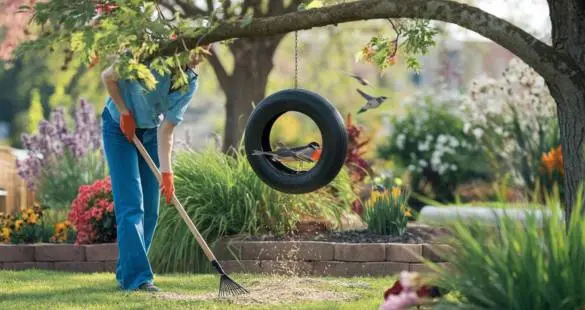
To ensure your bird feeder remains in good condition and attracts birds throughout the year, follow these maintenance tips:
- Rake Up Seed Hulls: To keep your grass healthy and prevent diseases in birds, rake up seed hulls in the spring after winter feeding and periodically during summer and fall.
- Seasonal Adjustments: Pay attention to the bird species visiting your yard as the seasons change, and adjust your feeder options to suit their needs.
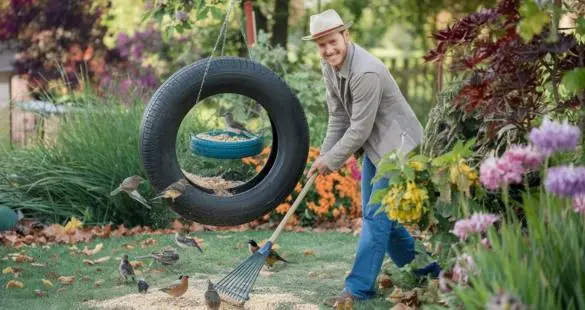
- Location Matters: Place feeders on the east or south side of your house to warm birds during winter.
Conclusion
Building a recycled tire bird feeder is a simple, eco-friendly project that benefits the environment and local wildlife.
With suitable materials, feed, and placement, your tire bird feeder will attract various birds to your yard.
Just remember to maintain your feeder and yard, and enjoy the sights and sounds of the birds flocking to your newly created space!

